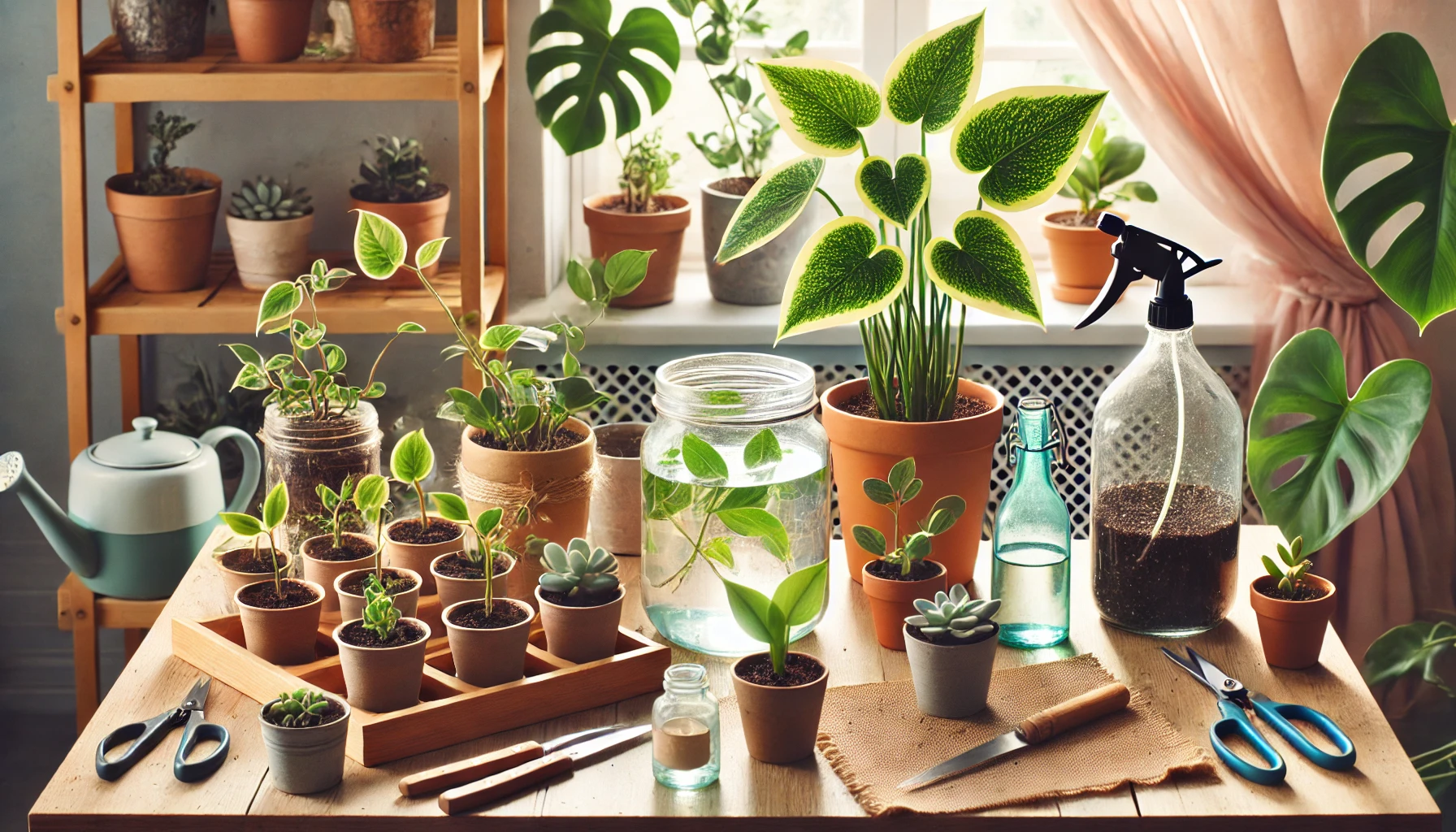Propagating plants is a rewarding and cost-effective way to expand your collection or share your favorite greenery with friends and family. By taking a cutting, dividing roots, or planting seeds, you can grow new plants from existing ones. In this article, you’ll learn simple methods to propagate plants at home, along with tips for success.
Why Propagate Plants?
Plant propagation allows you to grow new plants without purchasing them, making it an economical way to expand your indoor or outdoor garden. It’s also a fun and educational activity that deepens your understanding of how plants grow and thrive. Plus, propagated plants make thoughtful, personalized gifts.
Popular Propagation Methods
1. Stem Cuttings
This is one of the most common methods, suitable for plants like pothos, philodendrons, and succulents.
- Steps for Stem Cuttings:
- Select a healthy stem with a few leaves.
- Cut just below a node (the point where a leaf grows).
- Remove the lower leaves, leaving a few at the top.
- Place the cutting in water or directly into soil. If using water, ensure only the bare stem is submerged.
- Tips: Change the water every few days to prevent bacteria buildup. Roots typically form within 1-2 weeks, after which the cutting can be transferred to soil.
2. Leaf Cuttings
Ideal for plants like succulents and begonias, leaf cuttings can grow into entirely new plants.
- Steps for Leaf Cuttings:
- Gently remove a healthy leaf from the plant.
- Let the leaf callous over for a day or two to prevent rotting.
- Place the calloused edge in moist soil or lay the leaf flat on the surface.
- Tips: Keep the soil lightly moist and ensure the container is in a bright, indirect light spot.
3. Division
Best for plants with clumping roots like peace lilies and spider plants.
- Steps for Division:
- Carefully remove the plant from its pot and shake off excess soil.
- Gently separate the roots into smaller sections, ensuring each section has healthy roots and foliage.
- Replant the divisions into separate pots with fresh soil.
- Tips: Water the divided plants thoroughly after replanting to help them settle into their new pots.
4. Air Layering
This technique works well for woody plants like rubber trees or monsteras.
- Steps for Air Layering:
- Select a healthy stem and make a small cut to expose the inner tissue.
- Wrap moist sphagnum moss around the cut area and cover it with plastic wrap.
- Secure the wrap with ties or tape and keep the moss moist.
- Once roots form (usually within a month or two), cut below the root ball and plant it in soil.
5. Seed Propagation
While more time-consuming, starting plants from seeds is a satisfying way to grow herbs, vegetables, or flowering plants.
- Steps for Seed Propagation:
- Plant seeds in a well-draining seed-starting mix.
- Water gently and keep the soil consistently moist.
- Place the container in a warm, bright location or under grow lights.
- Tips: Follow the seed packet’s instructions for depth and spacing. Germination times vary, so be patient.
Caring for Propagated Plants
Newly propagated plants are delicate and require special care to thrive. Ensure they receive adequate light, water, and humidity. Gradually acclimate water-propagated cuttings to soil by keeping the soil moist during the transition. Fertilize lightly after the plants establish strong roots.
Common Challenges in Propagation
- Rotting Cuttings: Prevent this by allowing cuttings to dry and callous before planting and avoiding overwatering.
- Slow Growth: Be patient, as different plants propagate at varying rates. Ensure adequate light and temperature for optimal growth.
- Wilting or Dropping Leaves: Newly propagated plants may drop leaves as they adjust to new conditions. Maintain consistent care and avoid drastic changes in environment.
Propagation Success Tips
Use clean, sharp tools to avoid introducing infections to cuttings. Label your cuttings to track their progress, especially if propagating multiple plant types. Keep propagation stations in warm, bright areas away from direct sunlight, which can scorch young plants.
Propagating plants is a wonderful way to bring new life to your home or garden. With patience and practice, you’ll soon have a thriving collection of plants grown from your very own hands.
